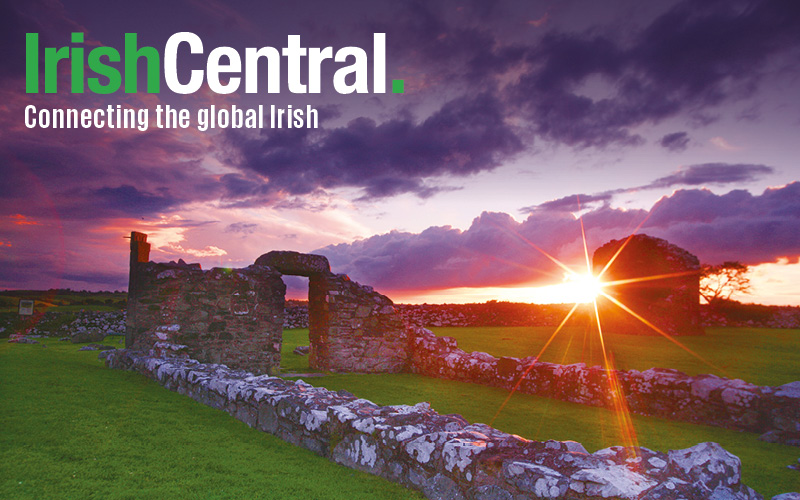Read more: St. Brigid’s Day, Feb. 1, marks start of Celtic Spring
Read more: How to make a Saint Brigid's Cross - SEE VIDEO
Spring in Ireland officially starts on St Brigids Day which is February the 1st in our calendar? Which may not be accurate as this is a celebration that has its roots along way back in pre-christian times, some 6000 years ago actually when there was no written tradition. Like many other cultures around the world female deities ruled supreme, the similarities between Egyptian mythology and Irish mythology being quite remarkable? For example most people will be familiar with Egyptian ritual from the Book of the Dead, of Isis breathing life into the mummified corpse, well not many know that the same scene is depicted in stone at the foot of a high cross in Ireland.
Similarly our Goddess, had a sacred cow that suckled a king, the same as Queen Hatshepsut in Egypt. Indian and many other cultures that revered the cow as a symbol of nurturing. In fact up until the 12th century children were baptised with milk in Ireland. Fascinating or obvious? these ancient races relied on the land so it is no wonder they revered the female Goddesses that embodied and symbolized mother earth for them. She had to be appeased and celebrated to insure the fertility of the land, animals and people. Celtic mythology holds that the chieftains slept with the goddesses in a mating ritual that crossed the boundaries of physical and metaphysical as these Goddesses could shape shift into birds and other mythical creatures. She could be ‘an old hag’ in human form standing at a crossroads, or the triple goddesses ‘Moriggan’ in the tale of the Tain or the ‘banshee’ in latter years foretelling death in a family.
Having infused tradition in Ireland with a mixture of reverence and fear, for thousands of years prior to Christianity creeping into Ireland, its highly understandable that our ancestors would have been a tad reluctant to banish her completely, which coincidentally is about the time she seems to have morphed into the Christian St Brigid we know about today? Although the signs were there from the start that this was no ordinary mortal woman?
Apparently or so the story goes and we Irish never let the truth get in the way of a good story, when St Brigid was trying to wrestle enough land on which to build her monastery in Kildare from the high king of Leinster, he said that she could have as much land as her cloak would cover. Where upon Brigid laid down her cloak and it magically spread out to cover several hundred acres....!
To read more about Irish Culture and Traditions visit www.irelands-hidden-gems.com/irish-culture.html or visit the excellent Museum of Country Life in Castlebar either in person or online http://www.irelands-hidden-gems.com/museum-of-country-life.html
Beannachtai na Feile Bride by Susan Byron author of Irelands Hidden Gems.com
Read more: St. Brigid’s Day, Feb. 1, marks start of Celtic Spring
Read more: How to make a Saint Brigid's Cross - SEE VIDEO
Read more: How to make a Saint Brigid's Cross - SEE VIDEO
Spring in Ireland officially starts on St Brigids Day which is February the 1st in our calendar? Which may not be accurate as this is a celebration that has its roots along way back in pre-christian times, some 6000 years ago actually when there was no written tradition. Like many other cultures around the world female deities ruled supreme, the similarities between Egyptian mythology and Irish mythology being quite remarkable? For example most people will be familiar with Egyptian ritual from the Book of the Dead, of Isis breathing life into the mummified corpse, well not many know that the same scene is depicted in stone at the foot of a high cross in Ireland.
Similarly our Goddess, had a sacred cow that suckled a king, the same as Queen Hatshepsut in Egypt. Indian and many other cultures that revered the cow as a symbol of nurturing. In fact up until the 12th century children were baptised with milk in Ireland. Fascinating or obvious? these ancient races relied on the land so it is no wonder they revered the female Goddesses that embodied and symbolized mother earth for them. She had to be appeased and celebrated to insure the fertility of the land, animals and people. Celtic mythology holds that the chieftains slept with the goddesses in a mating ritual that crossed the boundaries of physical and metaphysical as these Goddesses could shape shift into birds and other mythical creatures. She could be ‘an old hag’ in human form standing at a crossroads, or the triple goddesses ‘Moriggan’ in the tale of the Tain or the ‘banshee’ in latter years foretelling death in a family.
Having infused tradition in Ireland with a mixture of reverence and fear, for thousands of years prior to Christianity creeping into Ireland, its highly understandable that our ancestors would have been a tad reluctant to banish her completely, which coincidentally is about the time she seems to have morphed into the Christian St Brigid we know about today? Although the signs were there from the start that this was no ordinary mortal woman?
Apparently or so the story goes and we Irish never let the truth get in the way of a good story, when St Brigid was trying to wrestle enough land on which to build her monastery in Kildare from the high king of Leinster, he said that she could have as much land as her cloak would cover. Where upon Brigid laid down her cloak and it magically spread out to cover several hundred acres....!
To read more about Irish Culture and Traditions visit www.irelands-hidden-gems.com/irish-culture.html or visit the excellent Museum of Country Life in Castlebar either in person or online http://www.irelands-hidden-gems.com/museum-of-country-life.html
Beannachtai na Feile Bride by Susan Byron author of Irelands Hidden Gems.com
Read more: St. Brigid’s Day, Feb. 1, marks start of Celtic Spring
Read more: How to make a Saint Brigid's Cross - SEE VIDEO




Comments